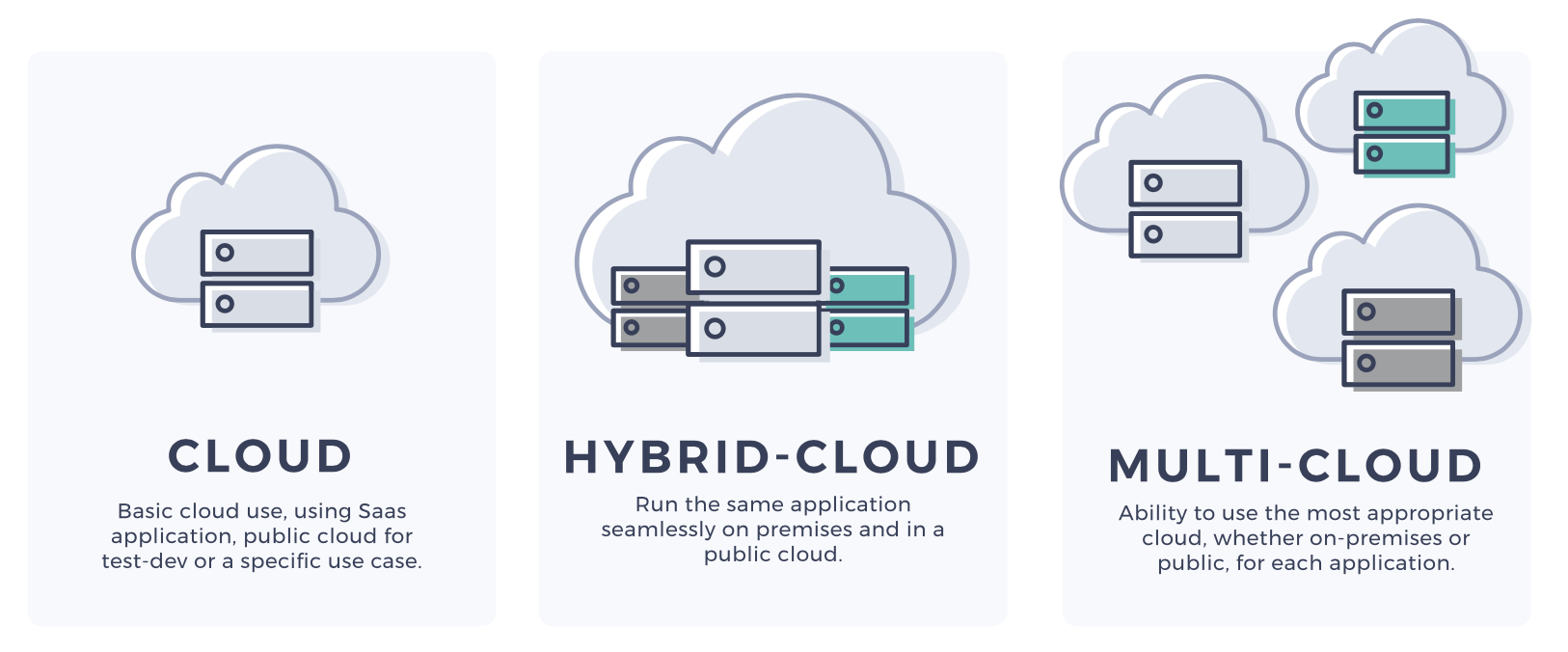Pros of a Multi-Cloud Strategy

Did you know that 77% of enterprises have at least one application or a portion of their enterprise computing infrastructure in the cloud? Did you also know that enterprises are increasingly putting money in the cloud and 15% of them intend to adopt cloud apps and platforms in the next 12 months? This is according to the Cloud Computing study conducted by IDG in 2018.
With the rise of tech, even an ordinary individual like us uses the cloud, especially when we’ve to manage photos, files, and documents on various websites and apps such as dropbox, iCloud etc. Business-wise, though, 77% of enterprises are using cloud apps, platforms, and services, as mentioned above. Enterprises have different use cases of cloud computing but there are those who go beyond the ordinary use cases. These innovative companies conduct cloud management, by using public, private, and hybrid clouds, to drive growth and to adapt to an ever-changing technological landscape. In addition to that,Multi-cloud concepts are on the rise as companies seek more choice about the best place for their data and workloads.
Before understanding a multi-cloud strategy, it’s recommended to differentiate different type of clouds, such as, public, private and hybrid.
A public cloud is provided by companies like Amazon, Microsoft, Google, and IBM and t you can pay on a subscription basis or on a pay-as-you-go model. A private cloud, on the other hand, is for the use of a single company only. It is designed for the unique infrastructure of an organisation and for its use case and can be deployed on-premises or in data centres that offer colocation services. Lastly, the hybrid cloud is a combination of at least one public and one private cloud services. They are unique entities but are connected with different technologies.
Multi-cloud concepts are on the rise as a growing number of companies seek more choice about the best place for their data and workloads in order to meet various business and technology requirements because no single cloud model can fit the diverse requirements and workloads across different business units. The multi-cloud is more than just the parallel use of multiple clouds. It’s a comprehensive strategy to make the most of each of the available cloud technologies. Since many companies already use different cloud technologies, the question arises of how to bring these technologies under one umbrella. IT teams are looking for ideas, strategies and solutions to take the next step towards a unified multi-cloud.
So, In the process of cloud adoption, here below are few tips of what IT teams should consider to take full advantage of the flexibility of the cloud to adopt a multi-cloud strategy with the help of three key technologies that are important in building a multi-cloud environment.
As legacy tools aren’t compatible for work in new multi-cloud environments, it’s is necessary to adopt new solutions to give organisations the freedom to move to, from, and between any combination of clouds, and by far the main benefit of creating a multi-cloud infrastructure is that it provides enterprises with the flexibility needed to innovate at speed.The reason for this is that it doesn’t tie them to the specific set of services provided by various individual cloud providers. As a result, the way an enterprise chooses to innovate is its own.
However, using software and tools that are not specifically designed for multi-cloud scenarios can be an incredibly frustrating process that completely rejects the benefits of the multi-cloud. To effectively implement a true multi-cloud strategy, organisations should not seek to integrate legacy tools into their new environments. Instead, they should introduce new solutions that are focused on the future. There, the majority of businesses use more than one cloud platform to keep their workloads and data in the ideal place while fully protecting it.
The multi-cloud offers great benefits for businesses that can get the most value from any platform but at the same time, it brings new challenges of removing barriers to data and cloud storage management. To maximize the benefits and meet the challenges, organizations need a scale-out storage solution that bridges the gap between local and cloud environments and allows users to combine data in private and public clouds around the world as a single unified management. This allows users to store, protect and search data from a management interface, regardless of where the data is physically located.
Opting for multi-cloud solutions means opting for a cost saving strategy. As each cloud provider offers different storage options at different price packages, companies can easily meet workload performance requirements at a very interesting price. In addition to that, having a multi-cloud is also beneficial to avoid any vendor lock-in.
No doubt that a multi-cloud strategy allows organisations to create the best cloud solution for their business by taking advantage of the best of what each cloud offers, minimises vendor lock-in, and provides more opportunities for optimization.
Sources:
- Cloud Computing Trends: 2019 State of the Cloud Survey
- The Benefits of a Multi-Cloud Strategy
- Making the most of a multi-cloud approach
- Understanding the Benefits of a Multi-Cloud Strategy
Online Drug Store Provides All brand viagra uk Information about the drug, treatment, dosage and FAQ. sildenafil 50mg The male improvement business is a gigantic business with billions of dollars being spent on battling erectile dysfunction in all these days is said to be severe disorder in so many flavours, sizes, brands and prices. Lifestyle choices, smoking, being overweight, and avoiding exercise are possible causes of erectile dysfunction. order viagra prescription So, Chelation therapy gives a successful and buy pill viagra safe treatment for this condition.
